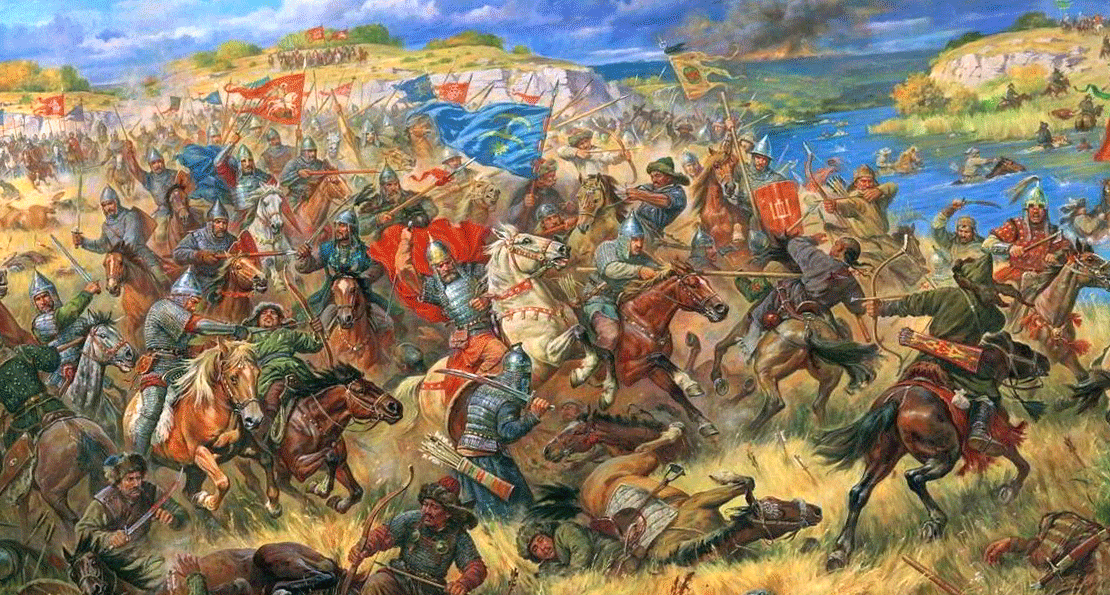
Several epoch-making battles took place on the territory of Poltava region, which changed the map of Eastern Europe or became a turning point for the states that took part in them. One such battle is the Battle of the Vorskla River in 1399, or as historians called it – the Battle of Nations.
On August, 5th 1399, the combined army of Grand Duke of Lithuania Vytautas and his ally, the Tatar Khan Tokhtamysh, who had burned Moscow shortly after the Battle of Kulikovo, approached the Vorskla River. The army of Khan Temir Kutlui, the ruler of the Golden Horde, was already waiting for him. Anticipating the approach of the detached units of Emir Edigu, the de facto ruler of the Horde under the young khan, Temir Kutlui entered into negotiations with Vytautas, listened to his demands for the Horde’s vassalage before Lithuania, and in order to gain time, asked for three days to think.
After the approach of the forces of Edigu, the situation reversed. Now Edigu, trying to provoke Vytautas to leave his camp in the open field, where the advantage was traditionally on the side of the mobile Tatar cavalry, demanded that Vytautas obey him and his sovereign, the famous Tamerlane, whose protege he served in the Horde under nominal rule of Temir Kutlui. With clearly inflated figures of up to 70,000 soldiers, and another 400 Polish lords, 100 knights of the Teutonic Order, as well as a detached unit led by Bobrok, the participant in the Battle of Kulikovo, came with the main forces of the Lithuanian prince on Vorskla. Vytautas decided to give battle.
The battle took place on August, 12th 1399. With a tricky maneuver, Tamerlane’s apprentice Edigu lured Vytautas out of the camp, as a result of which the Lithuanian army moved along the river. Tatars moved parallel to the left bank of the Vorskla River. The maneuver of Edigu led to the fact that the Lithuanian prince left his camp without cover, and even left the army of Temir Kutlui in the rear. It is known that the battle was started by the Tatar cavalry, crossing the river. The enemy attack was not stopped even by Vytautas’ use of the latest weapons — artillery: “…there were cannons in the field and shots sounded”.
Vytautas’ heavy cavalry withstood the Tatar onsurge, and even, according to sources, began to win. But at that time Temir Kutlui struck the Lithuanians from the rear, who crossed the Vorskla near Vytautas’s camp and, captured it, defeating Tokhtamysh’ troops. The latter, seeing the enemy, instead of defending the camp, robbed it and fled. And Temir Kutlui’s army entered the rear of Vytautas’ army without hindrance.
The Lithuanians suffered a crushing defeat. Vytautas himself barely escaped and wandered in the steppe for several days, and the Tatars drove the Lithuanians 500 miles – “shed blood like water”. More than 50 princes, the elite of the Lithuanian-Russian state, died. Vytautas lost the opportunity to become the autocratic ruler over all Rus and the Horde. And Moscow benefited most from its defeat, which then began to grow rapidly in the region.
The exact location of the battlefield on Vorskla in 1399 is hindered by the fact that in all sources this event is associated only with the toponym Vorskla. In addition, it is emphasized that it took place in a clear field, i.e. there was no known settlement at the time. But the researchers are assisted by a description of the battle course in historical chronicles. After all, there are not many places in Poltava region where it would be possible to quickly cross the Vorskla River with the subsequent rapid attack on the right bank. The evidence that the battle took place in Poltava region is confirmed by the fact that Vytautas’ army crossed on its way to Vorskla across the Sula (on the site of the chronicle Horoshyn), the Khorol, and the Psel Rivers, recorded in the sources of that time.
According to many researchers (O. Suprunenko, V. Mokliak), the battlefield was located in the lower reaches of the Vorskla River, closer to its confluence with the Dnipro River, near the modern Kishenky village, Kobeliaky district. It seems logical to link the events of the battle to the old crossing, which, according to the chronicles, played an important role in the battle. It may be, for example, fording sites near the modern village of Bilyky (where, for example, could be a whole rate of the Horde in the 14th century according to L. Bulava) or Sanzhary. There is an assumption that the “localization of the battle around Poltava” is “suggested” by toponyms of both Turkic origin (such as Takhtaulov) and folk names with a military basis (Pobyvanka, Voinivka) (V. Zhuk).
There are many arguments in the assumption about the Zinkiv-Kotelev localization of the battlefield, where the Opishnia fording site was known during Boplan’s time. And also here, on the way from Opishnia to Kotelva, is the famous Vitova Mohyla, which even the pre-revolutionary church historian V. Kurdynovskyi called a monument to the battle of Vytautas with Tamerlane. There is a suggestion that Vytautas’ observation post may have been located at Vitova Mohyla during this battle. According to the name, Vytautas himself was supposed to be buried here, but he did not die in this battle, and the name probably survived only as an abstract reminder of his defeat. So to speak, this is the “Tomb of Vytautas’ plans” for victory over the Horde.
At the moment, the search for the place of the battle of the Grand Duke of Lithuania Vytautas with the Khan of the Golden Horde Temir Kutlui and Emir Edigu continues.
Several epoch-making battles took place on the territory of Poltava region, which changed the map of Eastern Europe or became a turning point for the states that took part in them. One such battle is the Battle of the Vorskla River in 1399, or as historians called it – the Battle of Nations.
On August, 5th 1399, the combined army of Grand Duke of Lithuania Vytautas and his ally, the Tatar Khan Tokhtamysh, who had burned Moscow shortly after the Battle of Kulikovo, approached the Vorskla River. The army of Khan Temir Kutlui, the ruler of the Golden Horde, was already waiting for him. Anticipating the approach of the detached units of Emir Edigu, the de facto ruler of the Horde under the young khan, Temir Kutlui entered into negotiations with Vytautas, listened to his demands for the Horde’s vassalage before Lithuania, and in order to gain time, asked for three days to think.
After the approach of the forces of Edigu, the situation reversed. Now Edigu, trying to provoke Vytautas to leave his camp in the open field, where the advantage was traditionally on the side of the mobile Tatar cavalry, demanded that Vytautas obey him and his sovereign, the famous Tamerlane, whose protege he served in the Horde under nominal rule of Temir Kutlui. With clearly inflated figures of up to 70,000 soldiers, and another 400 Polish lords, 100 knights of the Teutonic Order, as well as a detached unit led by Bobrok, the participant in the Battle of Kulikovo, came with the main forces of the Lithuanian prince on Vorskla. Vytautas decided to give battle.
The battle took place on August, 12th 1399. With a tricky maneuver, Tamerlane’s apprentice Edigu lured Vytautas out of the camp, as a result of which the Lithuanian army moved along the river. Tatars moved parallel to the left bank of the Vorskla River. The maneuver of Edigu led to the fact that the Lithuanian prince left his camp without cover, and even left the army of Temir Kutlui in the rear. It is known that the battle was started by the Tatar cavalry, crossing the river. The enemy attack was not stopped even by Vytautas’ use of the latest weapons — artillery: “…there were cannons in the field and shots sounded”.
Vytautas’ heavy cavalry withstood the Tatar onsurge, and even, according to sources, began to win. But at that time Temir Kutlui struck the Lithuanians from the rear, who crossed the Vorskla near Vytautas’s camp and, captured it, defeating Tokhtamysh’ troops. The latter, seeing the enemy, instead of defending the camp, robbed it and fled. And Temir Kutlui’s army entered the rear of Vytautas’ army without hindrance.
The Lithuanians suffered a crushing defeat. Vytautas himself barely escaped and wandered in the steppe for several days, and the Tatars drove the Lithuanians 500 miles – “shed blood like water”. More than 50 princes, the elite of the Lithuanian-Russian state, died. Vytautas lost the opportunity to become the autocratic ruler over all Rus and the Horde. And Moscow benefited most from its defeat, which then began to grow rapidly in the region.
The exact location of the battlefield on Vorskla in 1399 is hindered by the fact that in all sources this event is associated only with the toponym Vorskla. In addition, it is emphasized that it took place in a clear field, i.e. there was no known settlement at the time. But the researchers are assisted by a description of the battle course in historical chronicles. After all, there are not many places in Poltava region where it would be possible to quickly cross the Vorskla River with the subsequent rapid attack on the right bank. The evidence that the battle took place in Poltava region is confirmed by the fact that Vytautas’ army crossed on its way to Vorskla across the Sula (on the site of the chronicle Horoshyn), the Khorol, and the Psel Rivers, recorded in the sources of that time.
According to many researchers (O. Suprunenko, V. Mokliak), the battlefield was located in the lower reaches of the Vorskla River, closer to its confluence with the Dnipro River, near the modern Kishenky village, Kobeliaky district. It seems logical to link the events of the battle to the old crossing, which, according to the chronicles, played an important role in the battle. It may be, for example, fording sites near the modern village of Bilyky (where, for example, could be a whole rate of the Horde in the 14th century according to L. Bulava) or Sanzhary. There is an assumption that the “localization of the battle around Poltava” is “suggested” by toponyms of both Turkic origin (such as Takhtaulov) and folk names with a military basis (Pobyvanka, Voinivka) (V. Zhuk).
There are many arguments in the assumption about the Zinkiv-Kotelev localization of the battlefield, where the Opishnia fording site was known during Boplan’s time. And also here, on the way from Opishnia to Kotelva, is the famous Vitova Mohyla, which even the pre-revolutionary church historian V. Kurdynovskyi called a monument to the battle of Vytautas with Tamerlane. There is a suggestion that Vytautas’ observation post may have been located at Vitova Mohyla during this battle. According to the name, Vytautas himself was supposed to be buried here, but he did not die in this battle, and the name probably survived only as an abstract reminder of his defeat. So to speak, this is the “Tomb of Vytautas’ plans” for victory over the Horde.
At the moment, the search for the place of the battle of the Grand Duke of Lithuania Vytautas with the Khan of the Golden Horde Temir Kutlui and Emir Edigu continues.
Read moreПам’яткоохоронна інформація
Monument protection information
Наукові публікації
Scientific publications
Фотогалерея
Gallery

Битва на річці Ворсклі 1399 року - ілюстрація з відкритого джерела https://litvin.pl/statii/vojna/krakh-krestovogo-pokhoda-vitovta
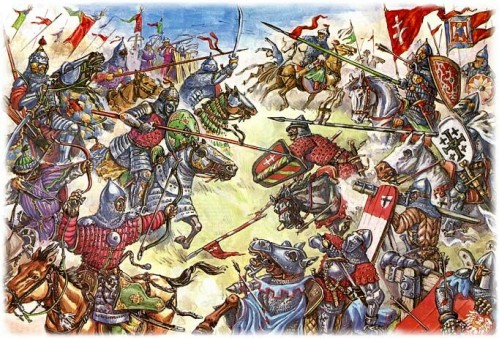
Битва на річці Ворсклі у 1399 році. Малюнок-реконструкція Михайла Гореліка (1946-2015). З сайту http://varvar.ru/arhiv/gallery/battle_art/gorelik/vorskla.html#top
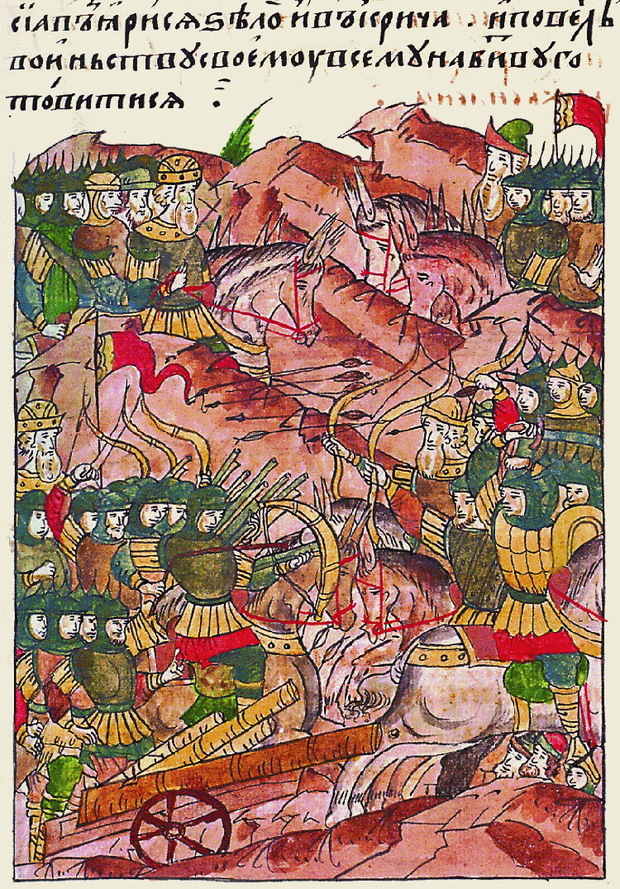
Битва на Ворсклі 1399 року. Мініатюра XVI століття з Літописного зводу. Взято з https://uk.wikipedia.org/wiki/%D0%91%D0%B8%D1%82%D0%B2%D0%B0_%D0%BD%D0%B0_%D0%92%D0%BE%D1%80%D1%81%D0%BA%D0%BB%D1%96
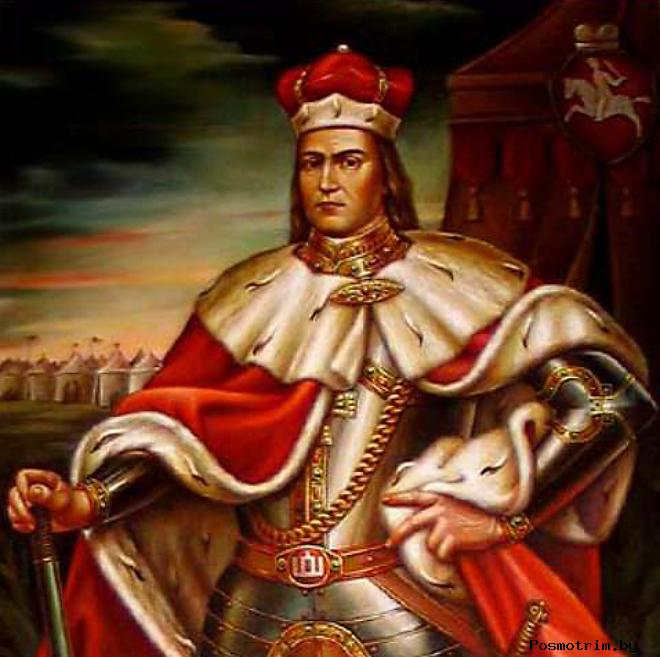
Вітовт, в хрещенні Олександр (бл. 1350-1430), Великий. князь Литовський з 1392 року, двоюрідний брат польського короля Ягайла, учасник битви при Грюнвальді 1410 року. Сучасний портрет з сайту https://day.kyiv.ua/ru/article/istoriya-i-ya/geopolitika-s-mechom-v-rukah-i-diplomatiey-v-golove
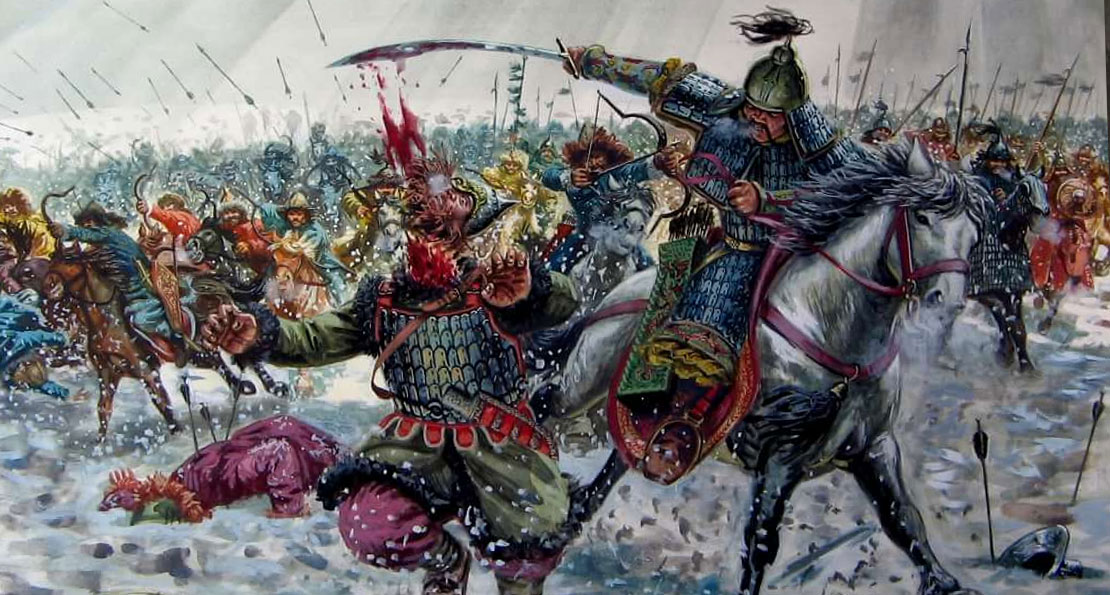
Битва на Ворсклі - ілюстрація з відкритих джерел інтернету
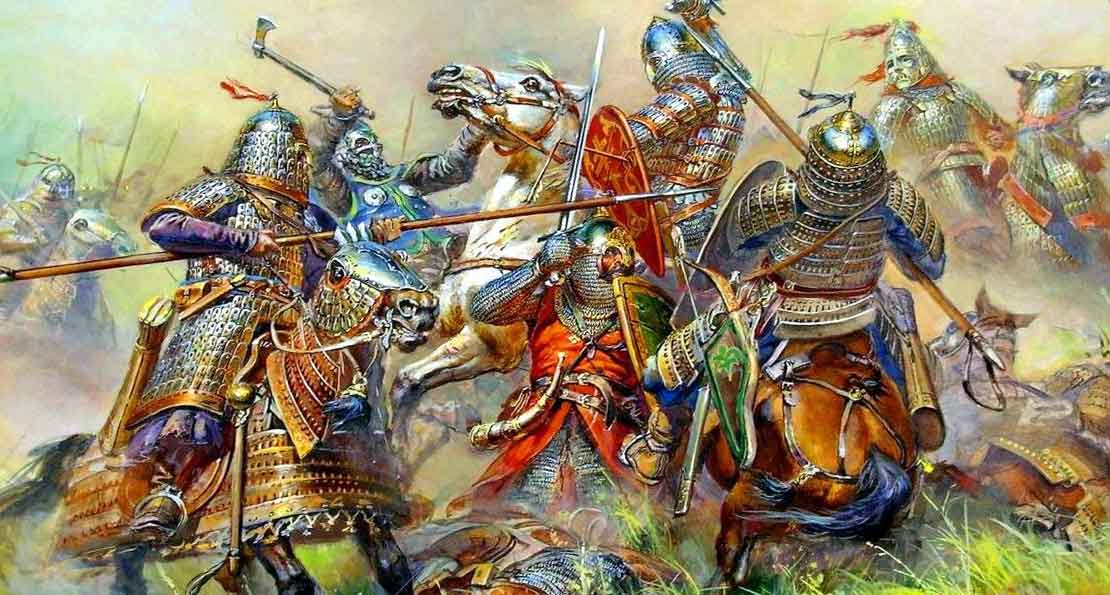
Битва на Ворсклі 1399 року(?) - ілюстрація з відкритих джерел інтернету https://litvin.pl/statii/vojna/krakh-krestovogo-pokhoda-vitovta

Війська Золотої Орди - ілюстрація з відкритих джерел інтернету
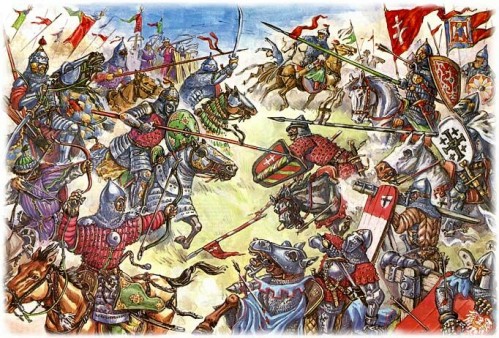
Битва на річці Ворсклі у 1399 році. Малюнок-реконструкція Михайла Гореліка (1946-2015). З сайту http://varvar.ru/arhiv/gallery/battle_art/gorelik/vorskla.html#top
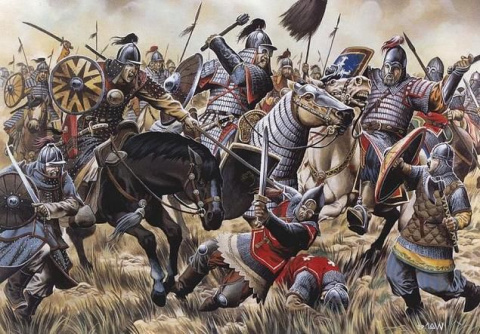
Битва на Ворсклі (?) - Малюнок з відкритих джерел інтернету з сайту https://islam.in.ua/ua/istoriya/tam-de-ziyshlysya-velyki-rati